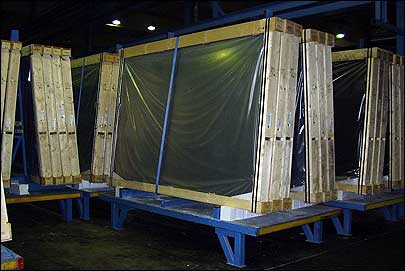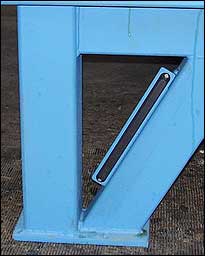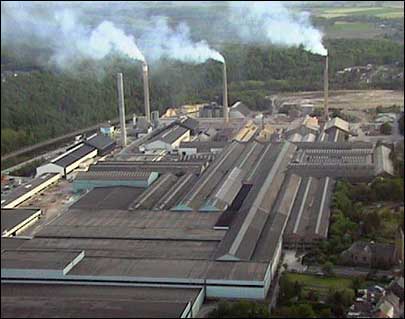Dec 01, 2008AGC Flat Glass Europe, a division of Asahi Glass Co. that employs 10,600 workers and reports €2 billion ($2.5 billion) in annual sales, is using an RFID application to help ensure worker safety in an area of its Moustier, Belgium, plant in which robot-operated cranes are utilized to package large sheets of glass.
Eric Deneye, AGC Flat Glass Europe's IT program leader, told attendees at last month's RFID Journal LIVE! Europe conference in Prague that the system provides the company with real-time information regarding the locations of four large forklifts as workers drive them into and out of the packaging area. The RFID system was installed at one area of the factory that was remodeled and is now used for packaging glass as large as 300 centimeters by 321 centimeters (118 inches by 126 inches).
After the production stage, sheets of glass are loaded onto a so-called stillage—a frame with four legs, a raised base and a rail several meters above the base. Approximately 1,000 stillages are fitted with two tags apiece, one on each of the frame's front legs. The two tags are encoded with the same unique ID number.
Forklift drivers must deliver the loaded stillages to the packaging area. To do so, they pick up a frame and carry it to one of 12 doors, each fitted with an RFID interrogator antenna. Using an onboard computer, the driver requests that a door be opened, and as the forklift moves through that door, its RFID interrogator reads the stillage tags and updates the system with the forklift's location.
Within the packaging area, the employee sets the stillage in the assigned row, marked off by a pair of small railings attached to the floor of the glass packaging areas so that the stillage remains in a fixed location when, at a later point in the process, a robot-operated crane packages the glass.
Since RFID readers identify the stillages that enter the packaging area, workers need not take the time to dismount their forklifts in order to identify a stillage by scanning its bar-coded label. At other areas of the plant, staff members must climb down from their forklifts to read the bar codes, sometimes slipping and spraining their ankles.
The system is set up so that the crane cannot operate while a forklift is within a marked-off row in the packaging room. When the forklift driver is ready to exit that section, he pushes a button to open a door. After driving his forklift out of the packaging area, he presses a second button to close the door once more. Once the door is reclosed, a robotic crane picks up individual panels of glass and packages them in protective coverings of plastic and wood.
When the system was implemented in 2006, the project organizers chose EPC Gen 1 RFID tags operating at 870 MHz because the tests showed they were satisfactory, and because the tags were available at a reasonable price at that time. The system employs a total of four interrogators from CAEN RFID, with IBM providing systems integration services.
The project's challenges included setting up the system in the factory's metallic environment and determining the proper position for the tags and reader antennas to ensure a satisfactory read rate. The system's ability to read the tags depends on the forklift's position, Deneye told conference attendees, as well as the tag's position on the stillage.
"We are currently improving the system," he stated. "Users are notified each time a read is successful, so they know when to enter data manually, if necessary."
According to Deneye, the total project cost was rather limited and allowed for a return on investment within two years through fewer employee injuries and a productivity increase. The company is presently considering introducing RFID into production, since the same stillages are used in that process as well.
"We are thinking of future expansion of the RFID project," Deneye said, "but for that, we need to find new opportunities with reasonable payback for deploying this technology."




